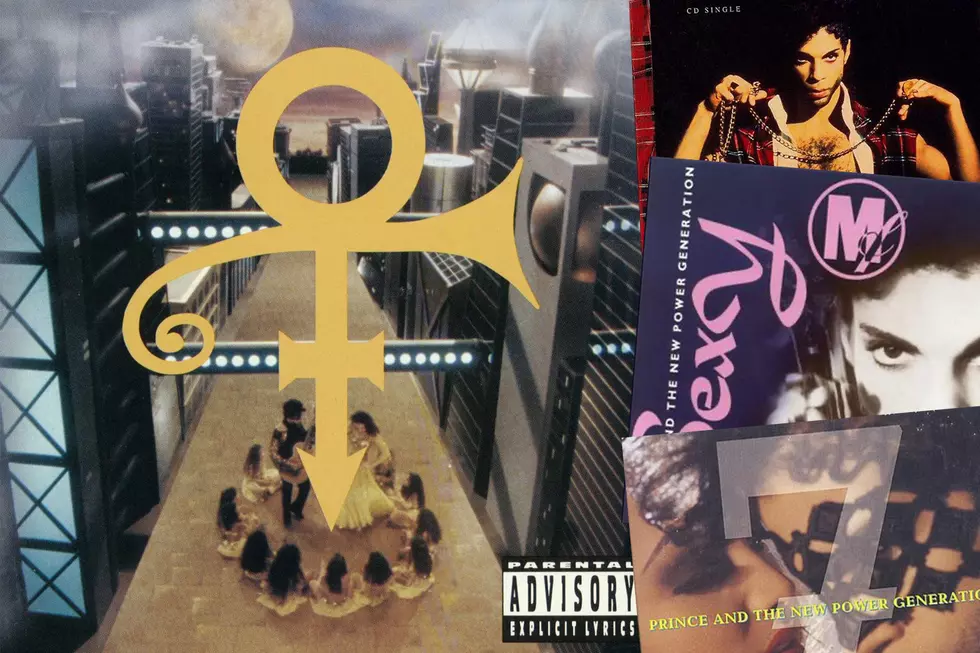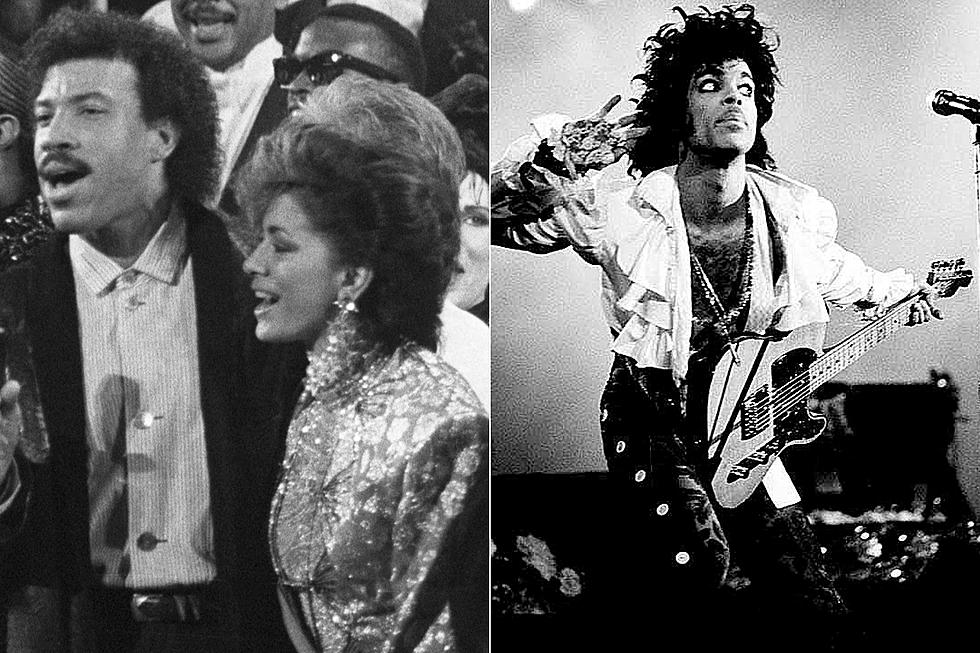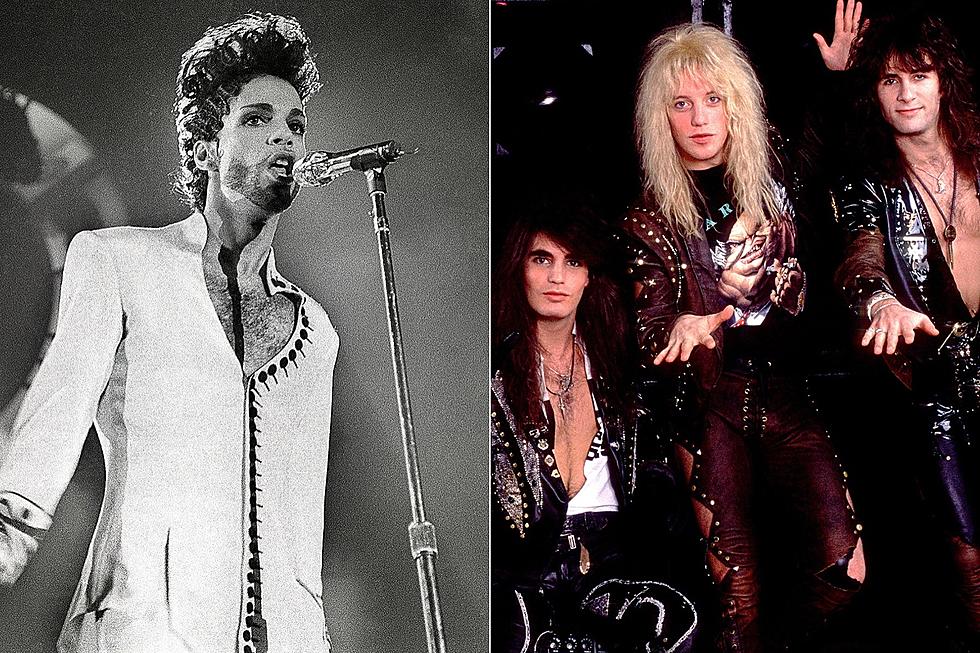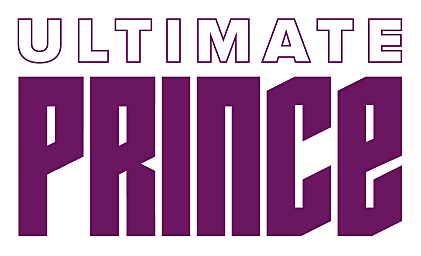
30 Years Ago: Prince Swings Big With the ‘Love Symbol Album’
After proving he could still conquer the pop charts with 1991's Diamonds and Pearls, Prince naturally took a sharp left turn away from MTV-courting palatability and careened into a wild-eyed space-funk opera.
The Love Symbol Album was issued on October 13, 1992 without a tag bearing its name. Officially, its title was unconventionally introduced as an unpronounceable hybrid-gender logo, copyrighted as "Love Symbol #2," the recognizable glyph now synonymous with Prince.
The Love Symbol Album saw Prince building on some of the more urban experiments ventured on his previous two records. Graffiti Bridge's flirtatious expedition into the era's emergent "new jack swing" scene and the emphatic hip-hop thrust of Diamonds and Pearls were revisited and reassembled with more sincerity, and accompanied by almost acrobatic lurches between sleek R&B, hyper-charged funk, steamy slow jams, ambitious swings toward jazz and myriad manifestations of unmistakably glamorous pop magic.
Equipped for the second time with the New Power Generation's backing, Prince tightened the nuts and bolts of the bridge between the musical identity sculpted by Prince in the '80s and the singer's keen ear to the early-'90s' burgeoning chart-courting fashions. Still, Love Symbol bursts out of the gate with a strong push toward the latter. "My Name Is Prince" announces itself with a quaking, Godzilla-like stammer. It's a kinetic, chaos-inspiring hip-hop-funk marriage that characterizes much of Love Symbol, an album whose cracks and crevices are filled in equal parts with turntable scratches and perky horn sections.
Watch Prince Perform 'My Name is Prince'
As opposed to the linear narrative mastered by Prince on albums like Purple Rain and Parade, Symbol plays more like a contained universe in which all actions occur side-by-side concurrently. "I Wanna Melt With U" marinates in an ecosystem where it's always raining rattling synth grumbles and coital gasps. "This is safe sex, New Power Generation style," Prince declares, prefacing a story about "getting busy for awhile / From the tip of my typhoon / To the bottom of your ankle chains." Meanwhile, at the opposite end of the solar system, "And God Created Woman" is an ethereal ballad that sensitively recounts the biblical story of Adam and Eve in the Old Testament's book of Genesis. Suddenly, our singer finds himself sweetly pleading that he's "guilty of no sin."
While the "Love Symbol #2" graphic had been deployed as the album title, it'd still be a full year until Prince would famously adopt it as his identity. But the tension between Prince and his record label that would prompt the reinvention were germinating during discussions concerning the promotion of the Symbol album. Whereas Warner Bros. insisted upon leading with the temperate "7" as the lead single, Prince fought (successfully) for the eruptive "My Name Is Prince." And while Prince got his way, Warner Bros. got vindication. The track, "7," eventually released as the third single from the album, was ultimately the highest charting of the Symbol singles, peaking at, peculiarly, No. 7. ("My Name Is Prince" and its follow-up, "Sexy M.F.," surrendered at No. 66 and No. 36, respectively).
Watch Prince Perform '7'
But commercial vitality aside, the ultimate sequence of singles was significant in the radical versatility they collectively represented of the Love Symbol album. The severe stylistic gulf between the conflicted, classy-and-crude "Sexy MF," telegraphing scarcely contained lust through frisky jazz vibrancy, and the innocuous "7" is as profound a leap as any succession of tracks on Love Symbol. (At least, it's presumed that "7" is innocuous. But we can't be sure. According to the Greatest Hits liner notes, "[Backup vocalist] Jevetta Steele asked Prince" about the song's meaning. "He only smiled.")
If the song sequence of Love Symbol comes off uneven or disjointed, there might be a reason for that. Originally formulated as a concept album, the odd inclusion of two skits—"Segue I," "Segue II" and a short monologue that bleeds from the end of "Damn U" into the intro of "Arrogance"—feature Cheers actress Kirstie Alley portraying a reporter in performances that are confusingly stripped from context.
The album had originally included eight of these "segues," that more coherently wove together a narrative storyline. The last-minute addition of "I Wanna Melt With You," however, necessitated Prince axe other material from the album. By default, the six least important segues—the alternative being cutting actual songs—were eliminated. Named after the Symbol track of the same name, Three Chains O' Gold, a straight-to-video film was produced in 1994 to better explain the whole tale.
While the Love Symbol Album failed to reach the commercial heights of Prince's other storyline-grounded works, Love Symbol shares blood with Parade, Purple Rain and the like. In a similar vein, the songs on Love Symbol function just as well as their own thrillingly cinematic statement independent of Prince's grand visual dimension. The obscurity of Three Chains O' Gold, after all, has yet to obscure the magnificence of Love Symbol.
Watch Prince Perform 'Sexy M.F.'
25 Times Prince Crossed Paths With Rock's Biggest Stars
More From Ultimate Prince










